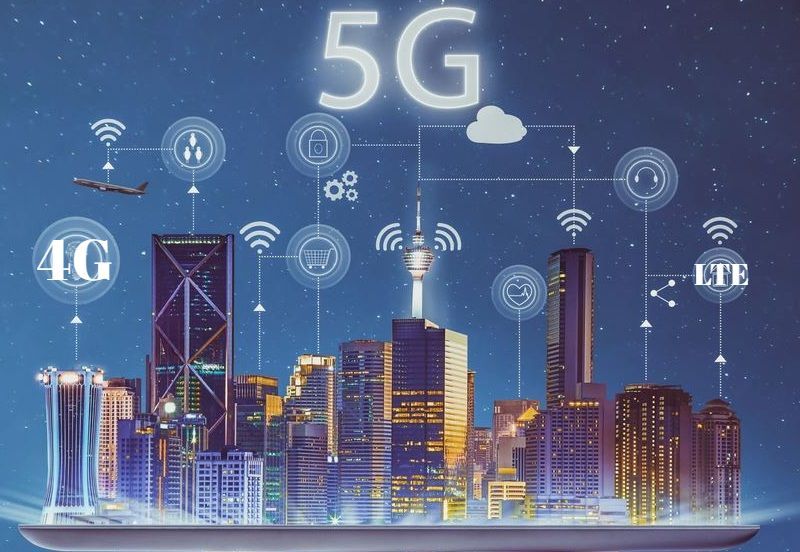4G 5G And LTE Networks
4G 5G And LTE Networks – Would you like a network with more speed? Let’s examine the differences between 3G, 4G LTE, and 5G in terms of network speeds for Verizon users. Smartphone-related words like 3G, 4G, 4G LTE, and 5G VoLTE are regularly used, but what do they all mean?
Let’s first define what the “G” stands for. It merely signifies the “Generation” that the tech is in. Everything beyond 1G relies on radio signals from phone tower to phone tower, whereas 2G using digital technology in the 1990s.
LTE: What does that mean? Verizon’s 4G LTE is described well below.
Long Term Evolution is the abbreviation. It refers to a specific variety of 4G that offers a quick mobile Internet experience. For instance, downloading files from the Internet on a 4G smartphone connected to Verizon’s 4G LTE network is up to 10-12 times faster than on a 3G connection. It is frequently referred to as 4G LTE.
All you need for 4G LTE to function is a smartphone that has been set up to support it. The 4G LTE network will automatically connect to these phones when it is accessible. Here are all of Verizon’s 4G LTE mobile devices.
Why is the future 5G?
The next phase of network development is 5G. Verizon 5G Nationwide operates like 4G LTE and is getting better. It is available in more than 2700 cities. Additionally, you may download files at rates up to 10 times faster than you can now with 5G Ultra Wideband that is available in over 1700 cities. You can download a song or a movie in seconds or minutes. 2 Additionally, 5G Ultra Wideband is more secure and swifter than free WiFi. So you can say goodbye to the previous slow Internet when you need to use the Internet while traveling. Be your hotspot to reduce your concern for snoopers or hackers.
How does 5G perform?
To transmit data over the air, 5G networks can be constructed using the low-band, mid-band, and high-band wavelength spectrum.
In addition to replacing LTE, 5G also brings a new standard dubbed 5G New Radio (NR). The most pleasing aspects of LTE will be built upon by 5G NR, bringing new advantages like improved connection and greater energy savings for connected devices.
High-band frequencies, such as millimeter waves, provide more bandwidth to carry more data in crowded metropolitan settings. Still, they only partially penetrate structures and necessitate the proximity of cell sites.
Mid-band offers greater coverage than high-band while balancing speed and range. And buildings have less of an influence.
Impact on internet speed
When compared to 3G and pure 4G goods, tech journalists assert that 4G devices and service speed commitments are unreliable; yet, 4G LTE offers a significant speed boost. This has the biggest effect on how quickly images and videos upload.
According to most reports, 4G is up to ten times faster than 3G, and 5G can be anywhere between ten and an erroneously high one hundred times quicker than 4G.
What is the 4G network exactly?
The 4th generation of technology, or 4G, is the forerunner to 5G. The most recent and cutting-edge version of cellular technology to become widely used was 4G in the 2010s. Improved VoIP capabilities, more bandwidth, and increased cell density were just a few of the 4G promises.
Is LTE equivalent to 5G?
No. Generally speaking, 5G mobile networks are quicker than 4G LTE ones, depending on the specific 5G network. 5G ultra-wideband networks provide incredible speeds of up to 1 Gbps! However, most 5G network users already use narrowband networks, which resemble 4G LTE “Plus” and have a top speed of about 250 Mbps.
Compare On Qualities
1. Latency
It is the most significant distinction between 4G and 5G. While 4G latency ranges from 60 to 98 milliseconds, 5G promises low latency of fewer than five milliseconds. Additionally, improvements in other fields, such as faster download rates, follow lower latency.
2. Potential download speeds
While 4G brought a variety of VoIP capabilities, 5G expands and improves on previous claims of fast potential download rates. The highest download speed for 5G is intended to be ten times faster than that of 4G, which reached 1 Gbps.
3. Base stations
The most typical base station needed to transmit signals is another important distinction between 4G and 5G. Similar to its predecessors, 4G uses cell towers to carry signals.
Carriers will roll out high-band 5G in small cells approximately the size of pizza boxes over numerous places, but 5G utilizes small cell technology because of its greater speeds and mmWave frequency bands. Cell towers will continue to be utilized by 5G for their lower frequency spectrums.
4. Cell density
Small cell technology enables 5G to increase network capacity and cell density. Although 4G made similar claims, 5G will ideally fulfill the gaps left by 4G since the latter never fully achieved its lofty general speed goals. Increased mobile device and connection capacity will result from 5G networks having the potential to accommodate more users and connected devices.
5. Reality versus aspirations for 5G
Promises made by emerging technologies are not always fulfilled. When comparing 4G and 5G network designs, organizations should consider what 4G promised, what 4G delivers, and what that might imply for the reality of 5G.
Badman believes that caution is essential since, in the actual world, aspirations don’t always come to pass. For instance, according to Badman, one 4G objective was to achieve average speeds of 100 Mbps to 1 Gbps. These speeds ranged from 7 Mbps to 43 Mbps on average.
Download rates and low latency objectives for 5G. This does not imply that 4G is terrible or that the initial objectives were false. Instead, these objectives lay the foundation for what 5G should and might do.

